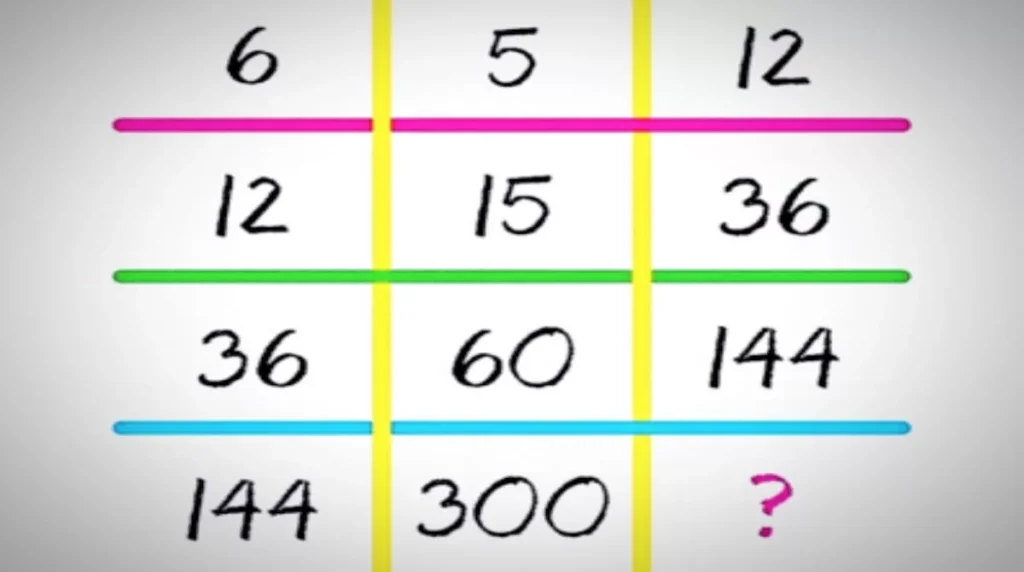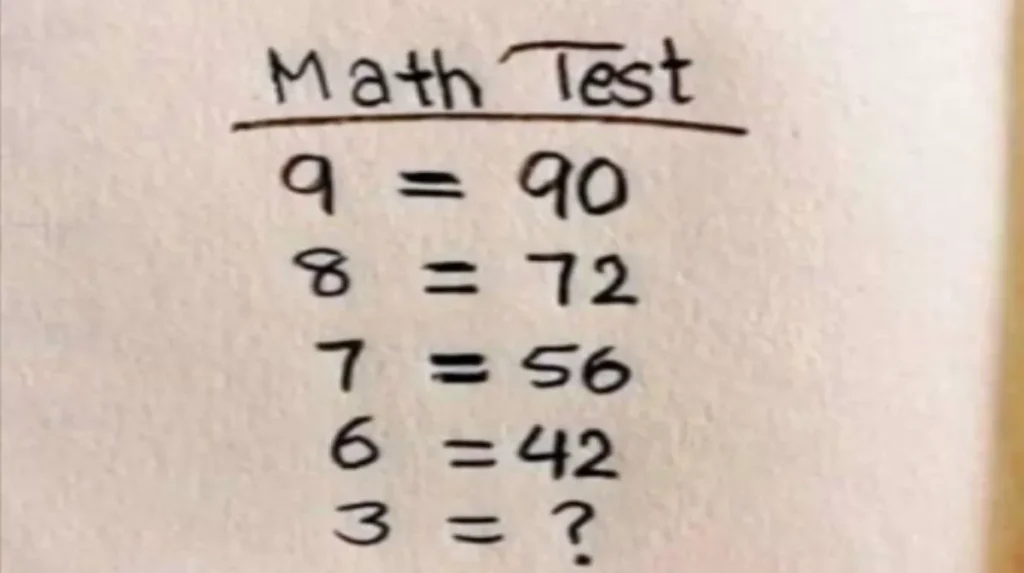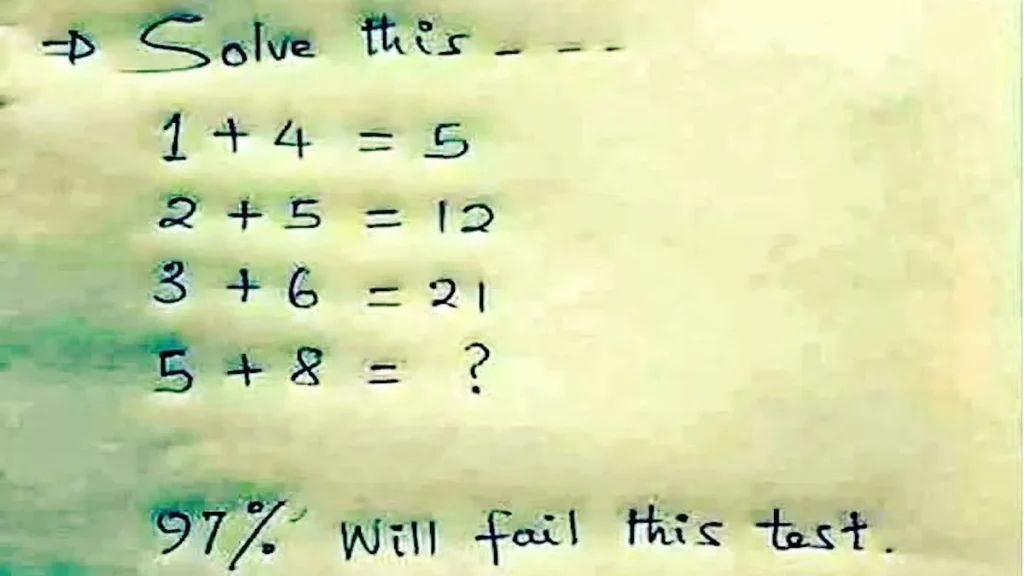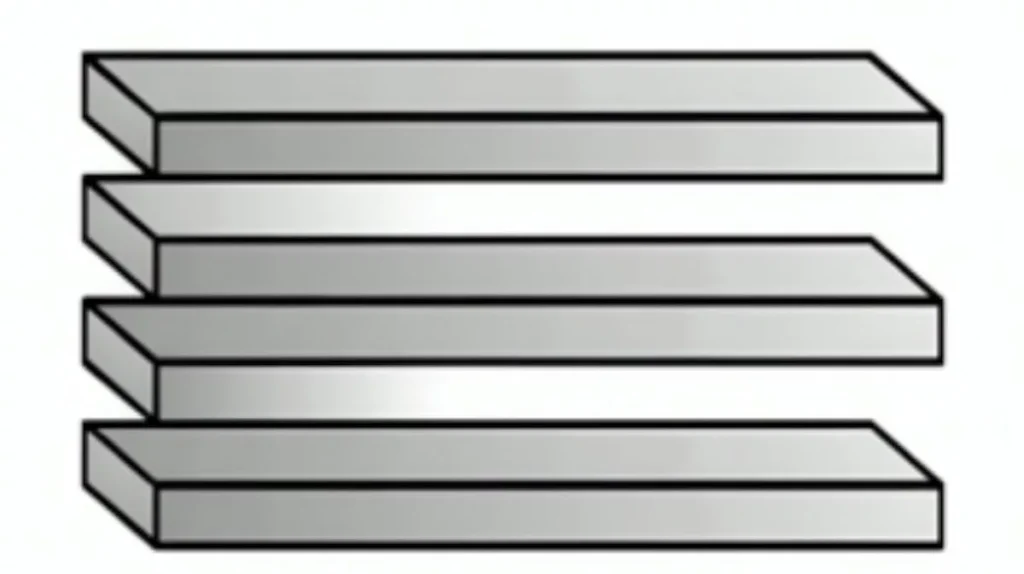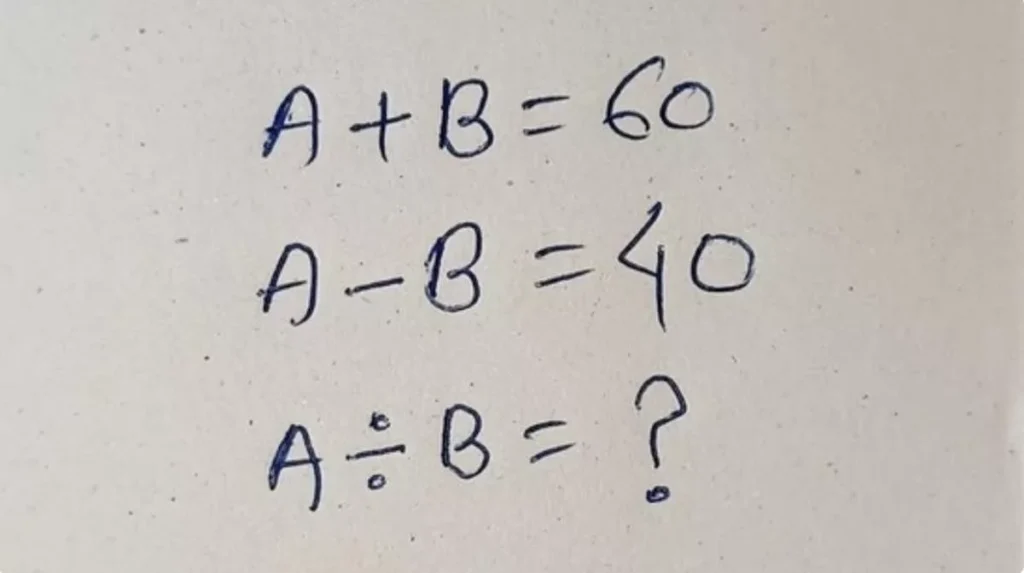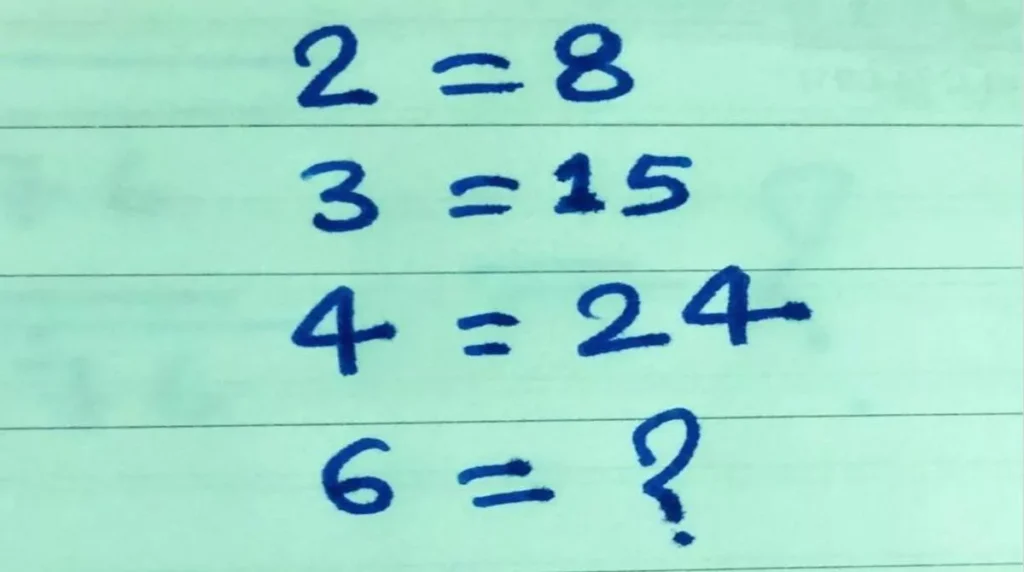A Math Puzzle That Intrigues the Web
A delicate math puzzle has recently gone viral, attracting thousands of internet users eager to uncover the missing number. Math puzzles have long been a favorite pastime for those who enjoy intellectual challenges. With the rise of social media, these enigmas have found a new audience, captivating people from all walks of life.
The Appeal of Logical Puzzles
From solving equations to identifying patterns, these puzzles stimulate our logical reasoning and problem-solving skills in a playful manner.
The thrill of solving a complex riddle greatly contributes to their popularity, sparking debates, exchanges, and lively interactions online.
If you enjoy exercising your brain, here’s a new puzzle that might leave you scratching your head.
The Math Challenge
This puzzle features a grid of numbers, with a missing value in the lower right corner.
The principle is simple, but the solution is not: will you be able to identify the logical pattern and determine the missing number?
Here’s the grid:
- First row: 6, 5, 12
- Second row: 12, 15, 36
- Third row: 36, 60, 144
- Fourth row: 144, 300, ?
Your mission: find the value that replaces the “?” in the last cell.
How to Solve This Riddle
Math puzzles often rely on recognizing patterns or relationships among the numbers. Start by observing the rows and columns: are there multiplications, divisions, or more complex progressions? Perhaps there’s a formula connecting the elements?
Before concluding, verify that your theory applies to the entire grid. These puzzles can be misleading: one pattern can obscure another.
A Viral Passion for Math Challenges
The internet has evidently developed a strong enthusiasm for numerical puzzles. They have become a popular way to test one’s logical thinking and critical mind.
On social media, many users share their hypotheses, debate possible solutions, and engage in friendly competitions around the toughest enigmas.
Platforms like X (formerly Twitter) have seen a significant increase in posts dedicated to these types of challenges, proving that math can also be entertaining.
So, Can You Find the Solution?
It’s your turn. Analyze the numbers, try different approaches, and see if you can unravel the mystery of this puzzle that’s circulating online.
Here’s the Solution We Found
## Step 1: Observe the Structure
Each row contains 3 numbers. It’s likely that the first two numbers of each row are used to derive the third.
Let’s look at the possible calculations:
## Step 2: Examine Each Row
### First row:
6, 5 → 12
Can 6 and 5 give us 12?
Let’s try different operations:
- 6 + 5 = 11 → no
- 6 × 5 = 30 → no
- 6 + (5 ÷ 5) = 7 → no
Let’s try a new hypothesis:
What if the formula is of the form:
a + (a × b ÷ 5)
Testing it:
6 + (6 × 5 ÷ 5) = 6 + 6 = 12
That works!
### Second row:
12, 15 → 36
Let’s test the same formula:
12 + (12 × 15 ÷ 5) = 12 + (180 ÷ 5) = 12 + 36 = 48
Nope. So, the formula doesn’t hold.
Let’s change approaches. Let’s try this:
What if the third value = a + b + (a × b ÷ x)?
Too complex. Let’s simplify.
## Step 3: Look at Simple Ratios or Multiplications
Let’s try another idea:
### 1st row:
6, 5 → 12
What if:
6 + (5 × 1.2) = 6 + 6 = 12
### 2nd row:
12, 15 → 36
12 + (15 × 1.6) = 12 + 24 = 36
### 3rd row:
36, 60 → 144
36 + (60 × 1.8) = 36 + 108 = 144
We notice that the multiplier for the second number is increasing progressively:
1.2 → 1.6 → 1.8 → probably 2.0 next.
## Step 4: Apply the Pattern to the Fourth Row
### 4th row:
144, 300 → ?
Let’s apply the same reasoning:
? = 144 + (300 × 2.0) = 144 + 600 = 744
Final answer: 744
The pattern is as follows:
The third number of each row = first number + (second number × increasing coefficient)
**The coefficients are:
- Row 1 → 1.2
- Row 2 → 1.6
- Row 3 → 1.8
- Row 4 → 2.0**
And remember, if you don’t want to keep enjoying testing and challenges, don’t click here!

